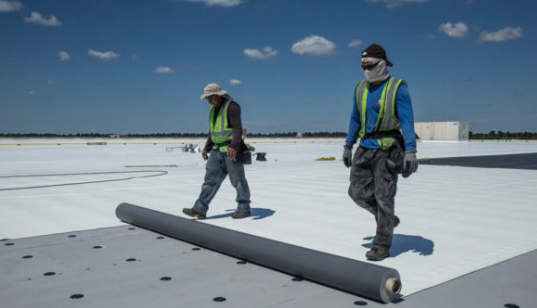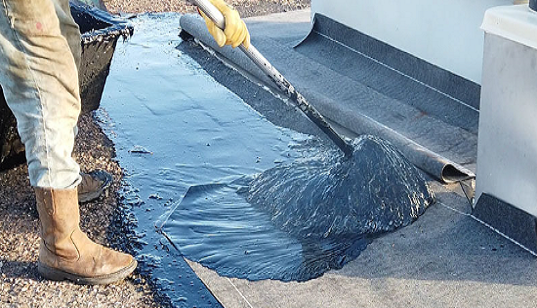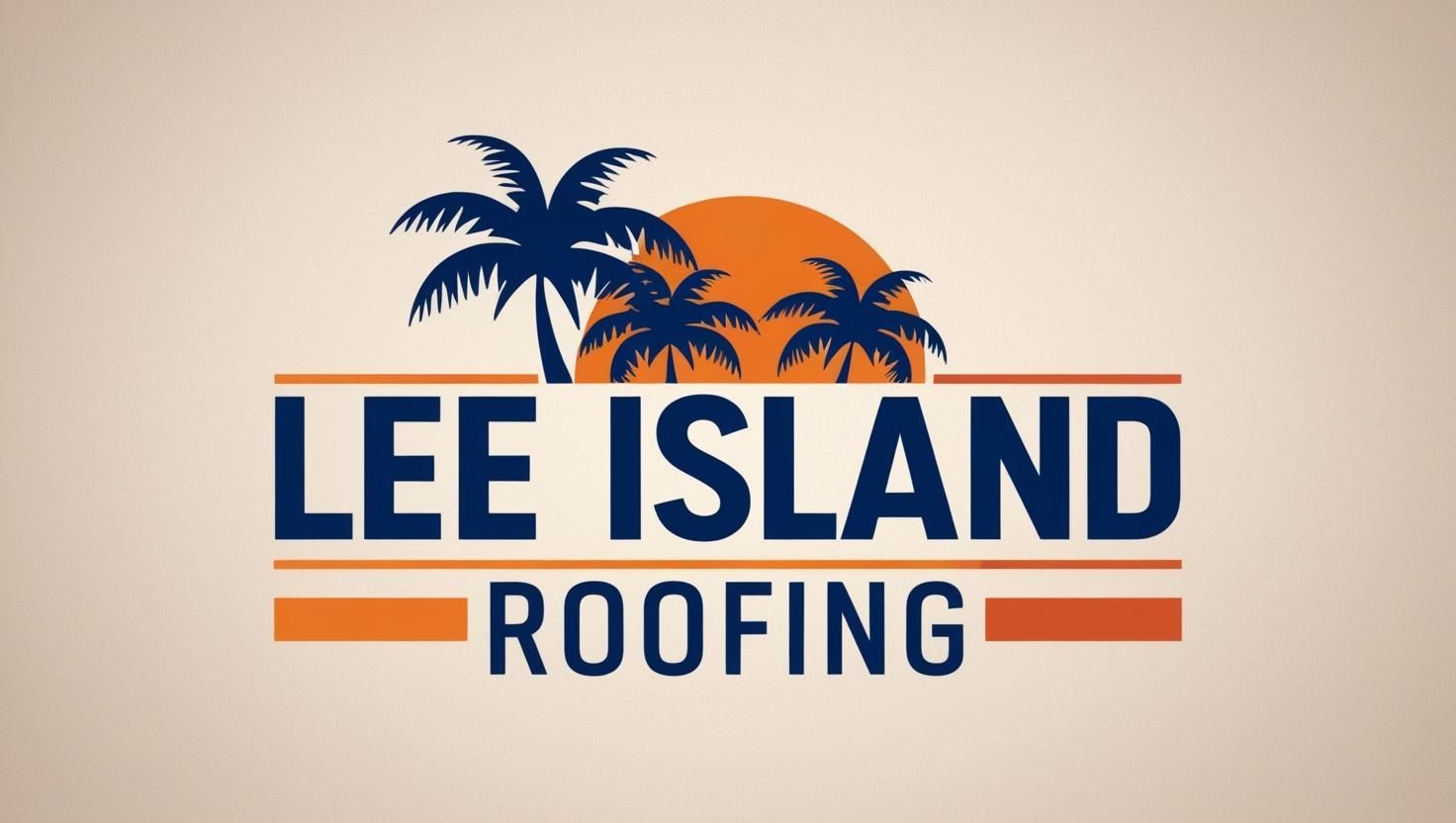Commercial Roof Replacement Services
Lee Island Roofing Contractors go above and beyond to prioritize quality, safety, and transparency in every project. We understand that replacing your commercial roof is a significant decision that deserves careful consideration. Our team comprises highly trained, licensed roofing professionals who are dedicated to delivering exceptional results. With a well-staffed crew and a structured process, we ensure timely, consistent, and reliable work to meet your needs.
When considering a commercial roof replacement, trust our certified contractors who specialize in all roofing systems—from metal standing seam to TPO membrane and modified bitumen. Our comprehensive approach includes thorough roof deck inspections, proper flashing installation, and adherence to building codes.
Every commercial roof replacement begins with a detailed assessment to identify potential issues like water infiltration or structural damage. We use premium underlayment materials and industry-leading sealants to ensure longevity against harsh weather conditions. Our project managers oversee each phase of your commercial roof replacement, carefully coordinating with building managers to minimize business disruption while maintaining the highest standards in waterproofing and insulation solutions.
Four Main Material Categories for Commercial Roofing

Single-Ply Commercial Roof Installation
Installing single-ply commercial roofing involves several critical steps to ensure durability and performance in challenging weather conditions. Professional commercial roofers near me always begin by thoroughly preparing the roof deck, ensuring it is clean, dry, and free of debris that could compromise the integrity of the roofing system. This crucial preparation phase may include power washing, addressing ponding issues, and repairing any structural deficiencies in the substrate.
After deck preparation, qualified installers will place a robust rigid insulation layer for optimal thermal protection, energy efficiency, and structural stability. This insulation serves as the foundation for the entire single-ply commercial roofing system and helps minimize thermal bridging that can lead to condensation issues and reduced R-value performance.
Next, experienced commercial roofers near me carefully lay the single-ply membrane (whether it's TPO with its reflective properties, flexible PVC, or durable EPDM rubber) over the insulation, meticulously ensuring proper alignment and adequate overlaps at all seams. Proper membrane positioning is critical to the longevity of single-ply commercial roofing systems and helps prevent future issues like billowing, tenting, or premature failure.
The attachment phase of single-ply commercial roofing installation varies based on building requirements and regional weather conditions. Contractors secure the membrane using specialized adhesives for fully-adhered systems, precision-placed mechanical fasteners for enhanced wind uplift resistance, or ballast methods that utilize river rock or pavers for inverted roof membrane assemblies (IRMA).
Professional installers then create watertight barriers by welding or sealing all seams. Hot-air welding is common with thermoplastic single-ply commercial roofing materials like TPO and PVC, creating molecular bonds stronger than the membrane itself. EPDM single-ply commercial roofing typically requires specialized seam tape or liquid adhesives to achieve proper seal integrity.
The detail work distinguishes quality single-ply commercial roofing installation, with careful flashing installation around roof perimeters, HVAC curbs, vents, drains, and all penetrations. These vulnerable transition points require masterful craftsmanship to prevent water infiltration through the building envelope.
Final quality control includes a rigorous inspection protocol, often utilizing electronic leak detection systems to verify the waterproof integrity of the newly installed single-ply commercial roofing membrane. This comprehensive approach ensures maximum performance and extended service life for your commercial roofing investment.

Bitumen Commercial Roof Replacement
Start by preparing the roof deck, ensuring it is clean, smooth, and debris-free. This critical first step in bitumen commercial roofing requires thorough inspection for structural integrity and proper drainage. Local commercial roofers recommend power-washing the surface to remove all contaminants that could compromise adhesion. Once the substrate is properly prepped, apply a base layer, typically an insulation board, for added stability and thermal protection.
The foundation of quality bitumen commercial roofing depends on proper insulation selection—polyisocyanurate or high-density fiberboard are industry standards that provide excellent R-value. Roll out the modified bitumen sheets, aligning them carefully. The sheets can be applied using torch-down, cold adhesive, or self-adhesive methods. Many local commercial roofers prefer the torch-down technique for bitumen commercial roofing when working in variable weather conditions.
Overlap seams to ensure a watertight seal, using heat or adhesive to secure them. For premium bitumen commercial roofing installations, maintain consistent 6-inch side laps and 8-inch end laps, applying uniform pressure with a weighted roller to eliminate air pockets. Install flashing around edges and roof penetrations for additional protection, using reinforced membrane flashing that's compatible with your bitumen commercial roofing system.
Counter-flashing should be mechanically fastened and sealed with elastomeric mastic for enhanced watershed protection. Complete the installation with a cap sheet for enhanced durability and a thorough inspection. The cap sheet in bitumen commercial roofing typically features ceramic granules or reflective coatings to protect against UV degradation and provide Class A fire ratings. Apply bitumen commercial roofing mastic at all termination points and around roof protrusions like vents, HVAC curbs, and drainage systems.

Built-Up (Tar) Commercial Roof Replacement
Installing a built-up tar commercial roofing (BUR) involves layering multiple materials to create a durable, weather-resistant surface that stands the test of time against harsh elements. Professional commercial roofers near me recommend beginning with a thorough deck inspection to ensure structural integrity before any materials are applied. The substrate must be clean, dry, and free of debris to achieve optimal adhesion when installing built-up tar commercial roofing systems.
Apply a base layer of insulation or felt to enhance stability and energy efficiency, creating a thermal barrier that reduces heating and cooling costs throughout the building's lifecycle. High-quality polyisocyanurate or rigid foam insulation boards provide superior R-values for commercial applications. Alternate layers of hot asphalt (or tar) and roofing felt are applied, creating a watertight bond that prevents moisture penetration and potential leaks. The bitumen used in built-up tar commercial roofing acts as both an adhesive and waterproofing agent, forming a seamless membrane across the roof surface.
Typically, three to five layers are installed, depending on the desired durability and specification requirements. Each ply reinforces the built-up tar commercial roofing system, adding tensile strength and puncture resistance. Expert commercial roofers near me utilize specialized equipment including hot kettles, felt layers, and propane torches to ensure proper application temperatures for optimal adhesion between layers.
Finish the roof with a protective cap sheet or gravel ballast to shield it from UV rays and weather damage. The aggregate surface of built-up tar commercial roofing provides excellent fire resistance and extends service life by minimizing photochemical degradation. For reflective properties, some building owners opt for a modified cap sheet with factory-applied mineral granules instead of traditional gravel surfacing.
Conduct a thorough inspection to ensure proper sealing and alignment, paying particular attention to flashing details around roof penetrations, parapet walls, and drainage systems. Quality built-up tar commercial roofing installations include proper edge metal terminations and expansion joints to accommodate building movement and thermal cycling without compromising waterproofing integrity.

Metal Commercial Roof Replacement
Installing a metal commercial roofing system demands meticulous attention to detail and strict adherence to roofing industry standards. The longevity and performance of your metal commercial roofing investment depend heavily on proper installation techniques. Commercial roofers with specialized training in metal roof systems understand that precision is non-negotiable when tackling these high-performance roofing solutions.
Begin by conducting a thorough inspection and preparation of the existing roof deck, ensuring it's free from debris, moisture, and structural deficiencies. Professional commercial roofers will verify the substrate meets load-bearing requirements before proceeding with any metal commercial roofing application. The deck must be structurally sound to support the weight of the metal commercial roofing system and withstand environmental stressors like wind uplift and snow loads.
Next, install a high-grade waterproof underlayment—this critical moisture barrier serves as secondary protection beneath your metal commercial roofing. Premium synthetic underlayments designed specifically for metal commercial roofing applications offer superior tear resistance and longevity compared to traditional felt options. This layer creates a watertight foundation while accommodating thermal movement inherent to metal roofing systems.
When laying out metal panels or standing seam profiles, experienced contractors always start at the eave edge of the roof and methodically work upward toward the ridge. Proper panel overlap is essential in metal commercial roofing to create impenetrable seams that prevent water infiltration. Secure each panel using appropriate fastening systems—either exposed fasteners with neoprene washers or concealed clip systems depending on the metal commercial roofing profile selected.
The installation of custom-fabricated flashing around roof penetrations, valleys, and transitions represents one of the most technical aspects of metal commercial roofing. Properly installed drip edges, rake flashing, and counterflashing protect vulnerable areas from moisture intrusion. Ridge caps and hip covers not only complete the aesthetic appearance but also provide crucial weatherproofing at these high-exposure junctions.
After completion, a comprehensive inspection of the entire metal commercial roofing system should verify proper panel alignment, secure attachment, and watertight integrity—ensuring your building enjoys decades of reliable performance from its premium metal commercial roofing investment.
